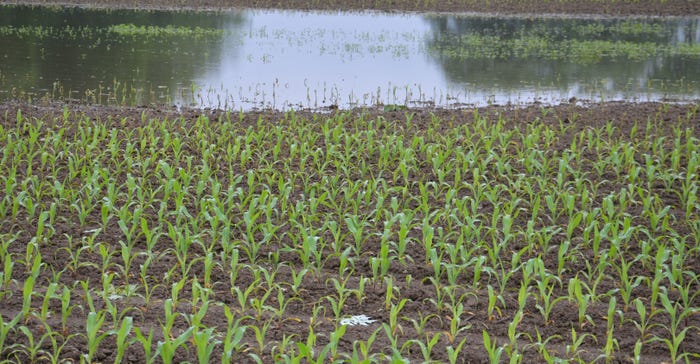
It’s a season to forget, and it’s only half over — more or less. It’s difficult to say where the season is at when there is corn at every stage, from pollinating and filling kernels to not even close to pollinating yet. And there are soybeans that haven’t been out of the ground two weeks yet.
If you feel like it’s been a long year, sift your way through these pictures and you will understand why. They chronicle the season so far, from seemingly never-ending weather delays to flooded fields and much more.
In other words, here are highlights — or lowlights, depending on your point of view — of the season so far:
Corn crop. It’s a record year for slow planting progress, but it also must be a record year in terms of spread in maturity of cornfields growing across the Midwest. Perhaps they don’t keep records on such things, but maybe USDA’s National Agricultural Statistics Service should.
There was corn pollinating by the Fourth of July — in Indiana and Illinois, not just in Georgia — but you had to look hard to find it. It was much easier to find fields that weren’t even knee-high by that proverbial important knee-high date.
Bob Nielsen says later-planted corn can speed up maturity on its own, so hopefully even late-planted corn will mature before frost. However, the Purdue University Extension corn specialist knows the crop will need lots of heat units during grain fill to make that happen.
Soybeans in 2019. You won’t be able to tell first-crop soybeans from double crops in many situations. There are cases where soybeans were planted the first time, or maybe replanted the second or third time, after some double-crop soybeans were planted in central Indiana. Steve Gauck, a sales agronomist with Beck’s, says it will take favorable weather in late August and September to turn this into a good soybean year.
Gauck suggests watching for insects, especially stinkbugs, as the crop rolls toward maturity. Even though it’s a late crop, it could be worth investing in insecticides if stinkbugs surpass the treatment threshold. You will only know if you scout fields all the way to harvest, he says.
Hay situation. Most livestock producers came out of winter with little or no old hay left in the barn. Then spring rains made it all but impossible to get first cutting made on time. As a result, hay prices are up, and high-quality hay is hard to find.
Continued rain for second and third cuttings will be a must. People resorted to rolling up everything, including odd lots and old pastures, when it was obvious hay could be in short supply. That may work for beef cattle but won’t be suitable for all types of livestock.
Wheat and straw. Wheat yields were strong where fungicides were applied. However, wet weather in mid-June slowed down maturity, and harvest was delayed, meaning planting of second-crop soybeans was also delayed. Straw is likely to be at a premium, too, simply because there is limited wheat acreage.
About the Author(s)
You May Also Like




